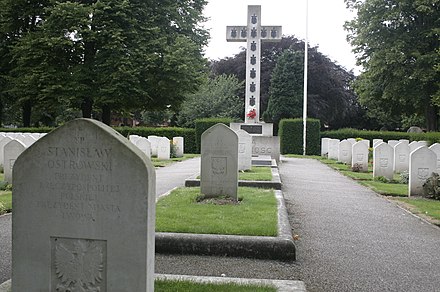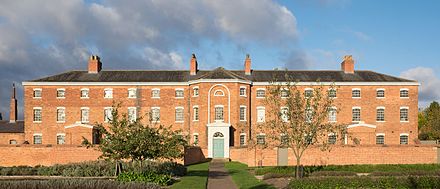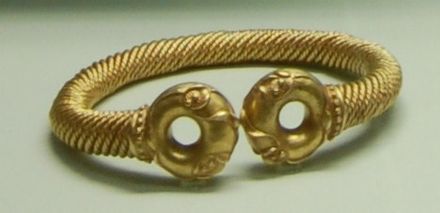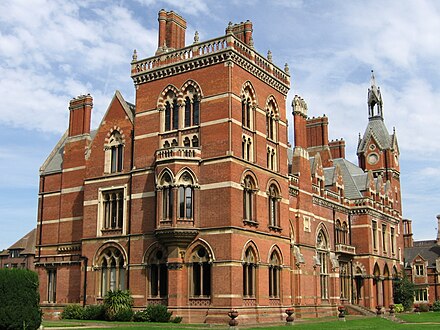Newark-on-Trent - market town in Nottinghamshire in the East Midlands of England
Newark-on-Trent is a market town in Nottinghamshire, on the edge of Sherwood Forest, with a population in 2011 of 27,700. It’s best known as the place where King Charles I surrendered during the English Civil Wars.
Understand
 Newark has been a transport hub at least since Roman times. "Fosse Way" swings inland to avoid the Humber but here reaches the River Trent, which is navigable. The town prospered through wool and cloth, and in the early 11th century it was owned by Lady Godiva, she of the legendary naked ride. King John died here in 1216, a year after signing Magna Carta. When the English Civil War broke out in 1642 over the powers of the monarch versus parliament, Newark supported the Royalists. But by 1646 Charles I was defeated across England and surrendered at nearby Southwell village; in 1649 he was beheaded. His son Charles II continued the war until 1651 but then fled into exile, and Britain became a republic. Castles that had resisted parliament were demolished, so Newark Castle became a ruin.
Newark has been a transport hub at least since Roman times. "Fosse Way" swings inland to avoid the Humber but here reaches the River Trent, which is navigable. The town prospered through wool and cloth, and in the early 11th century it was owned by Lady Godiva, she of the legendary naked ride. King John died here in 1216, a year after signing Magna Carta. When the English Civil War broke out in 1642 over the powers of the monarch versus parliament, Newark supported the Royalists. But by 1646 Charles I was defeated across England and surrendered at nearby Southwell village; in 1649 he was beheaded. His son Charles II continued the war until 1651 but then fled into exile, and Britain became a republic. Castles that had resisted parliament were demolished, so Newark Castle became a ruin.
Get in
By air
The nearest airport is East Midlands Airport (IATA: EMA) (30 miles, 50 km). This has good connections across West Europe, including Edinburgh, Glasgow and Belfast. For anything further afield, use the London airports.
A shuttle bus connects EMA with East Midlands Parkway railway station, with direct trains to Newark Castle. EMA airport buses also run from Nottingham, Derby, Leicester and Loughborough.
By train
 Newark Northgate 📍 is the principal station, northeast side of town on Appletongate. It’s on the East Coast main line between London and the north: trains from London Kings Cross (operated by LNER) run at least every hour and take 80 min via Peterborough and Grantham, continuing to Lincoln or to Doncaster then either Wakefield and Leeds or York, Newcastle and Edinburgh. There's a staffed ticket office and machines, toilets, cafe, ATMs and heated waiting rooms. There is step-free access to all platforms.
Newark Northgate 📍 is the principal station, northeast side of town on Appletongate. It’s on the East Coast main line between London and the north: trains from London Kings Cross (operated by LNER) run at least every hour and take 80 min via Peterborough and Grantham, continuing to Lincoln or to Doncaster then either Wakefield and Leeds or York, Newcastle and Edinburgh. There's a staffed ticket office and machines, toilets, cafe, ATMs and heated waiting rooms. There is step-free access to all platforms.
Newark Castle station 📍 is next to the castle and is on the line between Nottingham, East Midlands Parkway (for East Midlands Airport), Lincoln and Grimsby. These trains are operated by East Midlands Railway and run hourly. There's a staffed ticket office and machines, toilets and cafe. There is ramp access to both platforms from the public road, which traverses a level-crossing.
Plusbus is available at both stations.
By road
Newark stands on the A1 some 120 miles (192 km) north of London, at the junction with the A46 and A17. You’ll know you’re close when you see the steaming chimneys and silos of the British Sugar plant at Kelham just west of town. The junction is messy, especially when there’s a big event at the Showground, watch out for standing traffic queueing back onto the A1.
National Express coaches to Newark are suspended, but they intend to restart in 2022. Normally they take just under five hours from London Victoria, one direct (heading for Lincoln and Hull) and one indirect (change at Leicester).
Centrebus 24 runs three times M-Sa from Grantham, taking just under an hour.
Stagecoach Bus 28 runs from Mansfield M-Sa every 30 min, hourly Sunday, taking 90 min via Southwell and Kelham.
Marshall's Fosseway Bus 90 runs M-Sa hourly from Nottingham, taking 50 min; there's only four on Sunday.
Marshall's Bus 37 runs hourly M-Sa from Retford via Tuxford.
The bus station 📍 is central, off Lombard Street.
By boat
Newark stands on the River Trent, which is navigable and non-tidal. There is mooring for visiting craft, with two marinas in town and a harbour at the nearby village of Farndon.
Get around
The town is best explored on foot. The countryside around is flat and cyclable, but the roads are busy.
Take Bus 28 / 29 for the Timekeeping Museum, Workhouse and Southwell. You can either ask for “SUH-thell” or “South-well”, both pronunciations are used locally.
Local buses run frequently to Hawtonville, Balderton and the northern industrial estates.
Taxis wait at Northgate station. Operators include Yellow Cabs (+44 1636 705200), James Cabs (+44 1636 708000) and NTS (+44 1636 311441).
For long-stay visitor parking, use the two carparks by Castle railway station.
See
-
Town centre is attractive redbrick Georgian, centred on Market Square, and well-preserved along nearby Castle Gate and Appletongate. Town Hall Museum remains closed in 2022.
-
Newark Castle 📍 is effectively just a municipal garden with a tall old wall along one side, so it's more use for wedding photos than for withstanding a siege. But that's intentional: Newark and many other English castles were partly demolished after 1648, not in the heat of battle, but to prevent them ever being used again by rebels. (This policy was commemorated by Gracie Fields in her song “I’m one of the old ruins that Cromwell knocked about a bit”.) The castle was partly restored in the 19th century and what's left is the west curtain wall, with a watergate onto the River Trent, and a gatehouse. It's free to access in daylight hours, and occasional tours of the towers, undercroft and dungeons are run.
-
The Governor's House is a fine timber-framed house of 1474 on Stodman Street, but it's nowadays empty, having most recetly housed a Greggs which has moved next door.
-
St Mary Magdalene north on Church Walk is Anglican and the largest parish church in the country. It was begun in 1160, mostly built in the 14th / 15th century, and restored in 1855. Local legend has it that a cannonball shot during the civil war hit the spire and caused the small hole that is visible from just outside the church gardens on Mount Lane. Entry is free.
-
National Civil War Centre, 14 Appletongate NG24 1JY, 53.0765°, -0.8065°, +44 1636 655765, civilwarinfo@nsdc.info. W-Sa 10:00-17:00. In the 1640s, England was convulsed by the bloodiest war ever fought on its soil, which escalated into the "War of Three Kingdoms", and replaced an absolute monarchy with a parliamentary republic. This museum looks at the national context and local impact. Long-standing exhibitions display The World Turned Upside Down and Fake News - a theme even then. They also hold the Newark Torc, a fabulous Iron Age gold alloy bracelet found locally in 2005. Adult £8, conc £7, child £4 2022-05-29
-
Newark Air Museum, Drove Lane, Coddington NG24 2NY (by showground), 53.096°, -0.7574°, +44 1635 707170. Daily 10:00-17:00. The flat terrain of Lincolnshire is well-suited to airfields, which during the Second World War were bases for RAF Bomber Command. The museum has a large collection of mid 20th century military aircraft. See also Newark Cemetery: many members of the Polish Air Force served in this region and are buried there. So too was General Sikorski, their wartime Prime Minister and military commander, but his remains were repatriated to Krakow in 1993. Adult £10, conc £9, child £5 2022-05-29

-
The Queen's Sconce is the last remaining sconce in Newark. Sconces were large earthworks designed as forts during the civil war. the Sconce is preserved in Sconce Hills park, a large open area with several football pitches that see frequent use by Newark Town Football Club, a small orchard, a park and a café_._ Newark did have two sconces, the other being called the King's Sconce and was where Northgate retail park is now.
-
Museum of Timekeeping, Main St, Upton NG23 5TE (Bus 28), 53.0821°, -0.9045°, +44 1636 817601. F 11:00-15:00. Clocks, watches, and timepieces of all sorts. 2022-05-24
-
The Workhouse, Upton Rd, Southwell NG25 0PT (Bus 28), 53.0810°, -0.9392°, +44 1636 817260. Feb-Oct W-Su 10:30-16:00 (daily in Aug). Early poverty relief was organised by parish churches, but this was overwhelmed by the 1820s economic slump. Relief was then industrialised by the creation of workhouses - you could serve gruel into 160 small bowls more efficiently than a score of parishes each supplying a handful. But you must ensure that the place is as miserable as possible, to deter all but the most desperate. Southwell's gaunt Workhouse was built in 1824 and was a prototype for those that sprang up all over Britain and Ireland, and is the best preserved. The infirmary was added in the 1870s. The complex later became an asylum and refuge for victims of domestic abuse. It's now run by the National Trust. Adult £13.20, child £6.60, NT free 2022-05-29
-
Southwell 📍 five miles southwest of town has a splendid Norman minster, Gothic east and Romanesque west as they built in stages while dismantling the Saxon predecessor. The Bishop's Palace was wrecked in the Civil War but the Great Hall has been restored. The minster is open M-Sa 8:30-18:30, Su 08:00-16:30. Southwell village is charming redbrick Georgian, pity about the traffic. Here, rather than at Newark, is where King Charles I surrendered; he was then taken to nearby Kelham Hall.
-
National Holocaust Centre (Beth Shalom), Acre Edge Road, Laxton, NG22 0PA (13 miles north-west of Newark; you'll need a car.), 53.1962°, -0.9525°, +44 1623 836 627, office@holocaustcentre.net. Su-F 10:00-16:30, booking recommended. Beth Shalom - meaning "house of peace" in Hebrew - brings together a memorial garden, and two main exhibitions: The Journey, suitable for all ages, is an immersive and empathetic retelling of a 10-year old boy's escape from Berlin via the Kindertransport; The Holocaust Exhibition, suitable for teenagers and up, explores the societal conditions that permit genocide by examining the Holocaust in detail. There are often Holocaust survivors in attendance; check 'What's on' for dates. Adult £9, child/concession £7.50 2022-07-20
Do

- Palace Theatre is on Appleton Gate, tel +44 1636 655755.
- Cinema: the Odeon is at 23 London Rd. Paragon Cinema on Middle Gate remains closed in 2022. The Showgrounds occasionally have drive-in movies.
- Fitness: Anytime Fitness are within Castle Gate Leisure Centre. Active4Today are a mile south on Lord Hawke Way.
- Golf: local courses are Newark Golf Centre towards the Air Museum, Newark Golf Club at Coddington, and Southwell GC, Orchards (dead link: January 2023) and Norwood all near Southwell.
- Skydive Langar is one of the biggest and best equipped centres in the UK. It's 20 miles south of Newark at Langar NG13 9HY, near Grantham. The usual approach for a beginner is a “tandem” – strapped to an instructor, so minimum training and fitness are needed, but you do need decent weather. Email info@skydivelangar.co.uk or call +44 1949 860878. There’s another big centre at Hibaldstow north of Lincoln.
- Southwell Racecourse is an artificial all-weather track with year-round flat-racing and jumps races in winter. It's five miles southwest of Newark: nearby Rolleston station has trains every couple of hours between Newark Castle, Nottingham, Derby and Matlock.
- Newark Showground has frequent events, the biggest being the International Antiques & Collectors Fairs held about once a month, see the website for calendar and prices. The Nottinghamshire County agricultural show is held here in mid-May. The showground is in Winthorpe just northeast of the A1, about 3 miles from Newark town centre, on Lincoln Road NG24 2NY.
- GTSF is "Gate to Southwell Festival", next held 14-17 July 2022.
- Southwell Music Festival is held in the minster, with the next on 24-29 Aug 2022.
Buy

- Supermarkets include Asda on Lombard St (M-F 07:00:00, Sa 07:00-22:00, Su 10:00-16:00), Morrison's on Kings Rd and Aldi on Northgate.
- Market days are M, W-Sa, with a specialty food market first Friday of the month April-Dec.
Eat
- Cheap eats line Middle Gate, Appletongate and the streets off Market Place.
- Asha, 2 Stodman Street NG24 1AN, +44 1636 702870. Daily 17:00-23:00. Long-established reliable Tandoori eatery. 2022-05-29
- New King Wah, 5 Kirk Gate NG24 1AD, +44 1636 703114. M-W 17:30-22:30, Th-Sa 12:00-13:30, 17:00-23:00, Su 12:00-22:30. Decent Cantonese food, poor service. 2022-05-29
- Koinonia, 19 St Mark's Lane NG24 1XS (opposite bus station), +44 1636 706230. M-F 11:30-15:00, 18:00-22:00, Sa 11:30-23:00, Su 11:30-19:30. Friendly place serving good South Indian food. 2022-05-29
- New King Wah, 5 Kirk Gate NG24 1AD, +44 1636 703114. M-W 17:30-22:30, Th-Sa 12:00-13:30, 17:00-23:00, Su 12:00-22:30. Decent Cantonese food, poor service. 2022-05-29
- Caffrello Vietnam House, 2 London Rd NG24 1TW, +44 1636 676618. Tu-Th 17:00-22:00, F-Su 12:00-15:00, 17:00-22:00. Slick place dishing up good Vietnamese fare. 2022-05-29
- The Beck at Caunton, Main Street, Caunton NG23 6AB (5 miles northwest off A616), 53.1315°, -0.8875°, +44 1636 636793. W Th 10:00-21:00, F Sa 09:00-21:00, Su 09:00-18:00. This all-day eatery gets great reviews. 2022-05-23
Drink
- Old Kings Arms, 19 Kirkgate NG24 1AD. M-Sa 11:00-23:30, Su 12:00-23:30. Trad pub, smart, friendly and good value. 2022-05-29
- Old Post Office, 34 Kirkgate NG24 1AB, +44 1636 640988. M-Th 09:00-23:00, F Sa 09:00-00:00, Su 11:00-23:00. Pleasant spacious town centre pub with TV live sport. 2022-05-29
- Castle Barge, Town Wharf NG24 1EU, +44 1636 677320. M Tu 11:00-22:00, W-Sa 11:00-23:00, Su 11:00-05:00. A grain barge converted into a floating pub with food, also has seating on the river bank. 2022-05-29
- The Sir John Arderne (Wetherspoons), 3 Church St, NG24 1DT, +44 1636 671334. Daily 08:00-00:00. Good value Spoons for meals and drink. Sir John Arderne (1307-1392) was one of the first true surgeons, in an age when many were little better than butchers, Though you don't want to enquire about his treatment for what knights in armour get through sitting long hours on a horse. 2022-05-29
- The Navigation, 48 Mill Gate G24 4TS, +44 1636 676868. M-Th 16:00-22:00, F Sa 12:00-00:00, Su 12:00-22:00. Lively place on riverbank, often has live music. 2022-05-29
- Breweries are Newark Brewery on William St, Beermats near Southwell, Miilestone north in Cromwell, Tom Herrick's in Carlton-on-Trent and Cat Asylum in Collingham.
Sleep

- Premier Inn, Lincoln Rd NG24 2DB (by A1 junction), +44 333 321 1336. Reliable budget chain hotel north edge of town. B&B double £80 2022-05-29
- Travelodge, Beaumond Cross NG24 1XB, +44 871 984 6578. Comfy mid-range chain hotel in town centre. B&B double £95 2022-05-23
- The Lions, 55 London Rd NG24 1RZ, +44 1636 643880. Friendly B&B in a Georgian townhouse. B&B double £100 2022-05-29
- Compton House at 117 Balderton Gate is nowadays just self-catering and no longer a B&B.
- Deincourt Hotel (Best Western), London Rd NG24 1TF, 53.0718°, -0.8059°, +44 1636 602100. Victorian-style 32-bedroom hotel, simple but functional. B&B double £80 2022-05-29
- Kelham House, Main St, Kelham NG23 5QP (on A617), 53.0909°, -0.8519°, +44 1636 705266, enquiries@kelhamhouse.co.uk. Edwardian country manor, built by the owners of Kelham Hall across the road. It's back-to-back wedding parties in summer. 2022-05-29
- Kelham Hall, Main Road, Kelham NG23 5QX (on A617), +44 1636 980 000, info@kelham-hall.com. A pocket-sized edition of St Pancras designed by Sir George Gilbert Scott. The Hall and its predecessors have variously served as King Charles I’s first place of confinement, a country manor, a school for monks and missionaries, a sugar beet farm, and council offices. Plans to turn it into a spa hotel were sunk by covid, so it's a wedding and events venue, and parties stay in the manor across the road. However you can camp here or use the self-catering apartments. 2022-05-29
Stay safe
Newark is relatively safe. Places to avoid at night include Yorke Drive (near Northgate Railway Station), Devon Road (on Hawtonville Estate) and Sconce Hills Park.
Connect
As of May 2022, Newark has 4G with EE and Vodafone, and 5G with O2 and Three.
Go next
- Sherwood Forest 11 miles northwest was home to the legendary and entirely fictional Robin Hood. What’s factual is that this is the last stand of primeval forest in England. Everything else is a later planting, so the eco-system is unique, with the gaunt ancient oaks.
- Lincoln is a must-see, with its cathedral and castle enclosing a picturesque historic city centre.
- Major cities within an hour or so by train include Nottingham, Sheffield, Leeds and York.
Newark-on-Trent
newark.gov.ukNottinghamshire
2nd-order administrative division
England
Primary administrative division